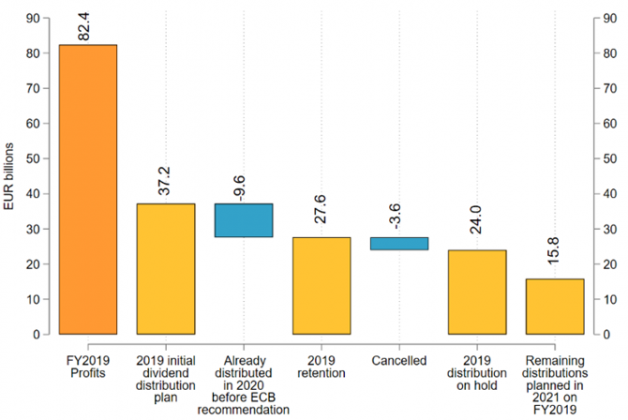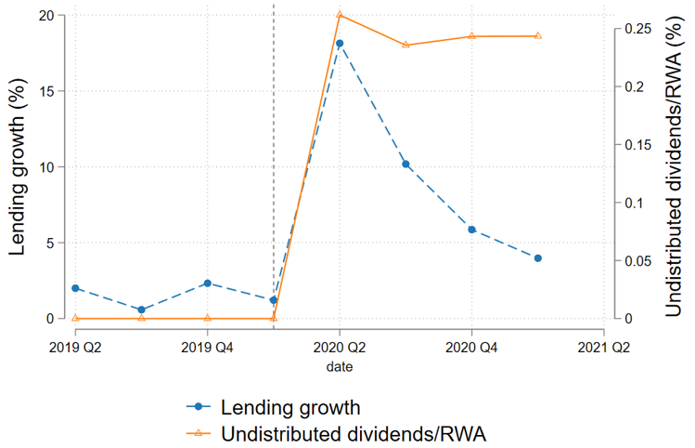



See the ECB press release of 27 March 2020. This was followed by an statement from the European Banking Authority on 31 March 2020. Many national competent authorities subsequently issued their own regulatory announcements in a similar vein.
To control for the confounding effects of monetary policy measures on lending we use the ECB dataset on targeted long term refinancing operations (TLTROs) to control for ECB long term funding provided to banks. We also use the deposits held by banks at the ECB as a measure of the take-up of Asset Purchase Programs (APPs) and Pandemic Emergency Purchase Programme (PEPP). To control for fiscal policy measures, we match the euro area credit registry data with bank-firm level information on payment moratoria and government guarantees schemes.
The (mis)use of policy stimulus has been studied also for the case of NFCs. Todorov (2020) shows that NFCs which benefited from the ECB’s Corporate Sector Purchase Program mostly increased dividend payments, rather than real investments. A dividend restriction policy at the time might have been helpful to avoid this negative externality.